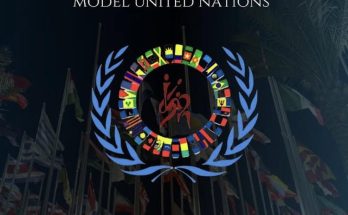On a recent trip to Chiang Mai, the bustling tourist hub of Thailand, Diya Aggarwal discovered so many striking cultural similarities between India and Thailand that she couldn’t help, but exclaim joyously: ‘Indo-Thai Bhai Bhai.’
In most parts of India, there is a perception, and rightly so, that anyone who is a “phoren travel wannabe” prefers to kick it off with Bangkok. The reasons are many – it’s not too distant, is affordable, there is no visa hassle and Bangkok has a lot to allure not only for hedonistic men (the proverbial ‘night market’), but also women (shopping) and children (adventure and widlife).
Recently, I also happened to join that “been there, done that” club as I planned a trip to Thailand with three of my friends. Although it was going to be my first ever trip to Thailand, not so surprisingly, others in the group who had been to Thailand had not gone beyond Bangkok. So, after some intense debate, we included Chiang Mai, a bustling domestic tourist spot in northern part of the country, in our itinerary.
The idea resonated with one of my male friends. He was not quite enthusiastic about the “unknown” Chiang Mai and kept throwing in suggestions in favour of the “familiar” Pattaya. But as the cliche goes, all is well that ends well. By the end of the four-day trip, he was not complaining. He agreed with all of us that Chiang Mai turned out to be quiet a wealth of culture and adventure.
Being a culture and history enthusiast, I look for familiar signs and symbols wherever I go. Although Thailand’s cultural connect with India is something we all know, one finds a more pronounced similarity between the cultures of two countries in Chiang Mai than in Bangkok, since it’s more rooted and less touristy. Be it the traditional attire of women, their ornaments, folk dances, even food and rituals, it’s redolent of how things are back home.
Wai: Say ‘Namaste’ in Thai
How they greet is the first thing that makes an impression on the mind of a wandering tourist about a country and its people. The traditional Thai greeting, called the wai, strikes an immediate emotional connect with Indians. Just like namaste, the wai is generally offered first by the younger person, with hands pressed together, fingertips pointing upwards. Only that the spoken word here is “Sawasdee khrap” (for male speakers) and “Sawasdee ka” (for females) instead of our unisex ‘namaste’ or ‘namaskar’. Like in India, here also, social status and position does have an influence on who performs the ‘wai’ first.

Jumbo delights!
There is a conspicuous fascination with elephants in Chiang Mai. They can be seen everywhere – in the lobbies of all big buildings in the form of murals and statues, on their outer facade, also entrenched in the floral prints on shirts and skirts, inked on bodies as tattoos, in the patterns on bedsheets and tablemats and of course, wildlife safaris and elephant parks. Indian children will not miss their familiar “friend Ganesha,” the beloved elephant-faced Hindu god, if they are visiting Chiang Mai.
Saying it with song, dance and prayers
Like in India, the dances in Chiang Mai’s culture also encapsulate rhythms of birth, death and daily life of its people. In fact, the varied dance forms and costumes are quite similar to Northeast India, triggering vivid memories of Nagaland or Sikkim. Like Indian classical dances, Thai people also tell a story through their dances – mostly romance or mythology. The overall effect is lavish, loud and boisterous, with lots of drum-beating and the use of many props.
The history of Thailand, home to around 150,000 persons of Indian origin, is replete with references about the movement and mixing of the Thai people with other cultures. Naturally then, their dressing style is quite like ours. The traditional garment – the Siwalai – in its overall feel, is quite similar to the drape of a saree – with a blouse, a long pleated skirt which is ankle-length, and a dupatta draped in a pallu style. Not only that, on special occasions, the women here wear flowers around their buns just like women in India do. Even the ornaments are as elaborate and intricate as Indian jadau necklaces and bangles.

They welcome guests with a garland, and we got a taste of it at the airport itself where the local hosts welcomed us with mogra. Thai people are also fond of building temples on hilltops and have an array of big and small temples in virtually every neighbourhood. When they sit in worship in front of their deity (generally Buddha), they also close their eyes and fold their hands in prayers. Quite surprisingly, they even use incense sticks and do some charity in the name of nine planets to placate the respective planetary gods.
At the end of the trip, what endures is the lasting impression of an intimate interconnectedness of Indian and Thai cultures that harks back to centuries of unbroken cultural interactions. The pleasures of Thailand are myriad – each person to his taste – but more than anything else, it is an instinctive, but unspoken sense of cultural affinity that brings Indians in thousands to Thailand every year. Next time, step beyond the legendary hedonism of Bangkok to get a feel of India in the pulsating life of Chiang Mai.
Author Profile
Latest entries
 CultureApril 1, 2014Border-crossing: Supper in Sweden, Dinner in Denmark
CultureApril 1, 2014Border-crossing: Supper in Sweden, Dinner in Denmark Books / PoetryOctober 3, 2013Unmasking honour killings in India
Books / PoetryOctober 3, 2013Unmasking honour killings in India CultureSeptember 20, 2013The Little Mermaid: 100 years of fairytale splendour
CultureSeptember 20, 2013The Little Mermaid: 100 years of fairytale splendour India and the WorldJuly 27, 2013Dubai Unbound: Tourism, economy bounce back; India bets on growth story
India and the WorldJuly 27, 2013Dubai Unbound: Tourism, economy bounce back; India bets on growth story







